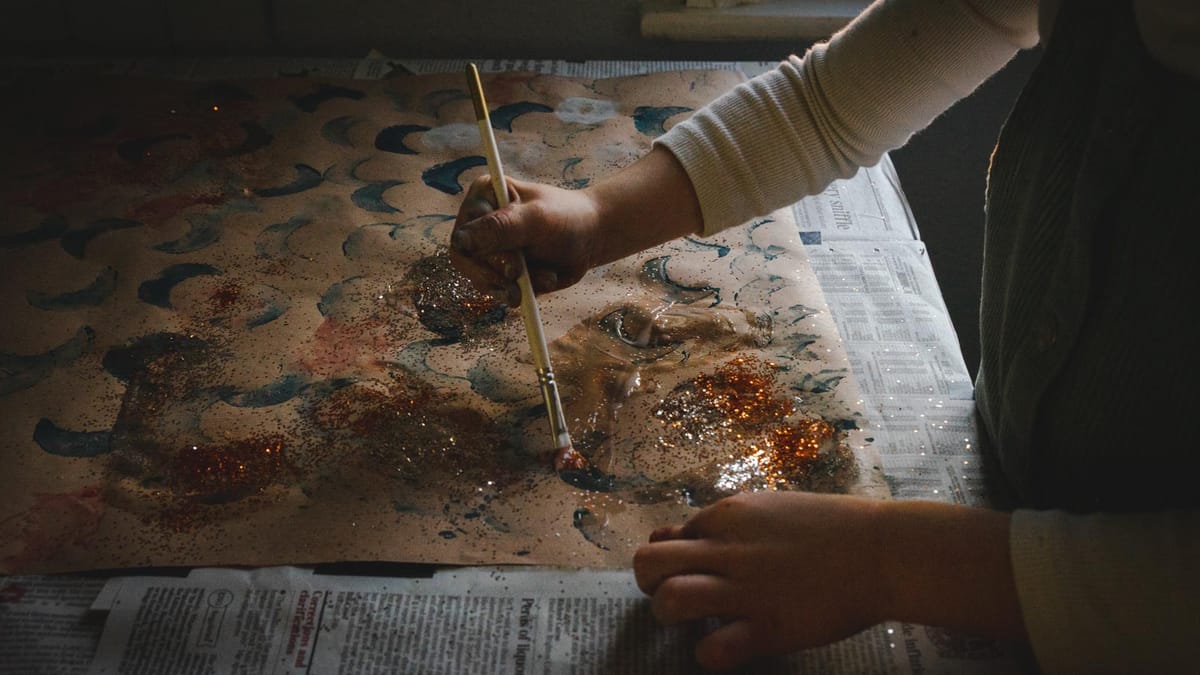My atelier

I always had dreams of living in a big house with a conservatory, with plan chests full of large sheets of paper and long tables for large artworks and design projects.
But it turns out that life had other plans. So our atelier is in the corner of our kitchen. It’s not much more than a craft trolley with a few extra boxes of useful things.
What is an atelier?
The idea of the atelier comes from the preschools of Reggio Emilia. You and I would probably call it an 'art room' but it's so much more than that.
The atelier serves as a dynamic, creative space where children explore, experiment, and express themselves through various mediums. It embodies the Reggio Emilia philosophy that values creativity and hands-on learning as fundamental to child development. The atelierista, a trained artist, guides children in their projects, encouraging critical thinking, collaboration, and problem-solving.
In the atelier, children develop an appreciation for aesthetics and art and learn to communicate their ideas and emotions. It's also the perfect forum for interdisciplinary learning. It's a place where art, science, maths and literacy come together.
Learning is more holistic and engaging. There are no worksheets. There is no testing. It’s a very seductive approach.
I don't have an atelier; I have a craft trolley. And most of the time it's a mess.
But it’s enough. The children know it’s there. And, best of all, they know what to do – because it comes naturally to them. This is a lesson I had to learn the hard way. Years of teaching, creating unnecessarily complicated activities, so much wasted time for so little reward.
The older and more experienced I get, the less I do. Some of it is self-preservation. I don't have the energy to be 'on' 24/7. The days of being an energetic co-conspirator are over.
But, more than that, I know it's the right thing to do.
Comments ()